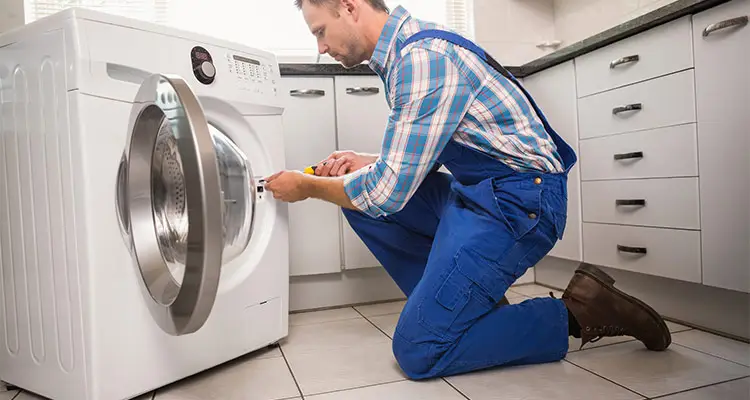Have you noticed that your dishwasher is not draining all the way? Are you wondering if it is a problem that needs to be solved by a professional? Wondering if you should be alarmed?
In this article you will find a useful guide to know if it is a problem that needs a specialized repair or not, and what you should do to solve it.
The first thing you should know is that when your dishwasher does not drain completely, it is not always damage that requires repair by a specialized technician. Your dishwasher may be in optimal condition to work, but there may be small causes that prevent it from draining completely and that you can quickly solve at home:
- The door is not closing: If it’s not closed all the way and latched, the dishwasher won’t finish draining. Try closing the door, latching it, and running the dishwasher again.
- Cycle interrupted: If the cycle was interrupted, the dishwasher might not have drained. Look for a cancel/drain button or a way to reset the dishwasher. If you don’t see a button clearly labeled on the dishwasher dash, go online and google your dishwasher’s make and model to see if you need to press a combination of buttons to make it drain.
- Electrical Source: Many dishwashers are plugged into an outlet that is controlled by an electrical switch. Make sure you didn’t accidentally turn off the electrical source mid-cycle. The switch is often next to your garbage disposal switch and can be easily switched off without you realizing you’ve cut the power to your dishwasher.
- Drain Hose: Your drain hose is probably connected to your garbage disposal, which means you could be experiencing issues with the disposal or the drain hose. Check to see if:
- The drain hose is kinked, preventing drainage
- The drain hose is clogged
- The knockout plug is still in place and needs to be removed
- The drain hose is hanging down or is too long (it needs to be tacked up to the underside of the counter to drain properly)
- You may need a new drain hose.
- Garbage disposal and Drain: If your garbage disposal is clogged or your drain system is blocked, your dishwasher won’t drain properly until you get the drain cleared or the garbage disposal cleared. Likewise, check your sink drain, since many dishwashers drain through the sink drain. Try running hot water down the sink drain or disposal and running the disposal, if this doesn’t work you might need to call a plumber service.
- Air gap blocked: The air gap is the unobstructed vertical space between the water outlet and the flood level of your sink fixture, it makes it so water can easily flow from the faucet into the sink, but prevents water from flowing from the sink basin into the faucet, preventing contaminants from the sink from entering into the potable water system through siphonage. So if your air gap is blocked remove the chrome cover, unscrew the cap, and clean any residue or build-up with soap and water. You can find the air gap above the sink. It will look like a small cylindrical fixture mounted parallel with your kitchen sink faucet. You may want to check the manufacturer’s instructions for further cleaning advice. Replace air gap plastic cap and cover when finished.
When you have done all this, and the problem persists, it is best to call a specialized plumber who can do an evaluation and repair of your dishwasher. Keep in mind that when there’s just a teensy bit of water in the bottom of your dishwasher, you don’t need to worry, it is normal, a little bit of water is always needed to remain in the bottom of your dishwasher to maintain the pump seal moist.
Remember that it is important to carry out annual maintenance and check on your dishwasher, for this you can do the following:
- Clean the filter and trap with a stiff brush and hot soapy water (you can find the filter and trap at the bottom of your dishwasher).
- Clean the spray arm holes with a stiff wire brush (removing debris that has accumulated and clearing all the spray holes).
- Check the dish racks for cracks or peeling off of the rubber sealant. It is normal that after a couple of years of use, this rubber coating comes off, exposing metal. The metal rusts and those bits of metal collect in the drain, clogging it. You can fix this at home with little rubber caps and glue or with liquid rubber to paint these areas so that they won’t rust.
- Check the drain hose clamps to ensure they are properly attached and angled for optimal draining
- Look for leaks or cracks in the door seal.
- Make sure the pre-heating mechanism is working properly
Finally, keep in mind that your dishwasher, as well as all your appliances, need specialized maintenance and revision once a year to work properly and to prevent further damage.








